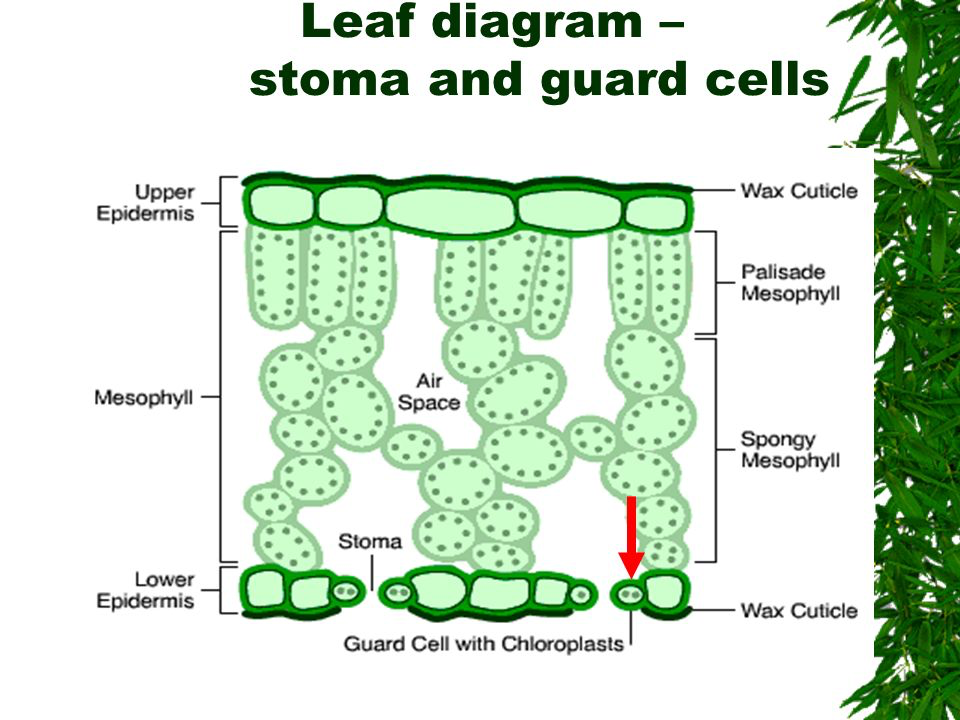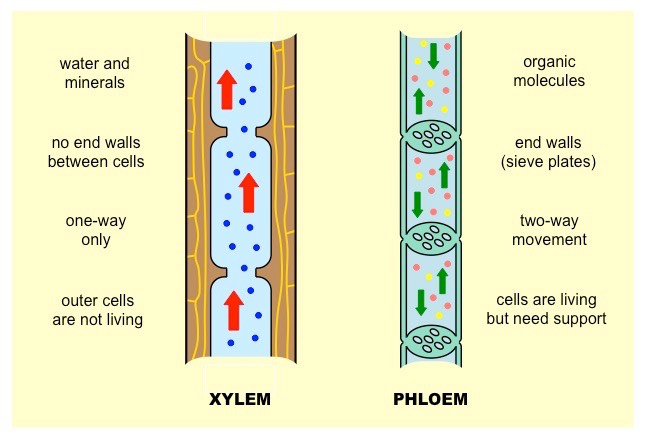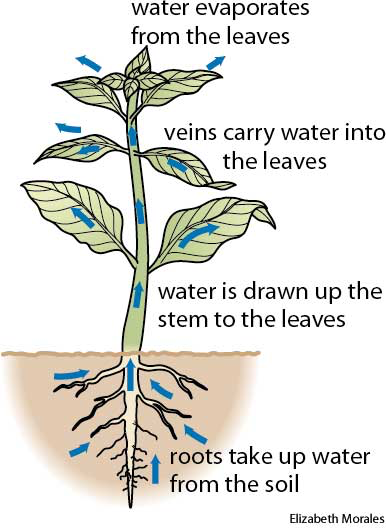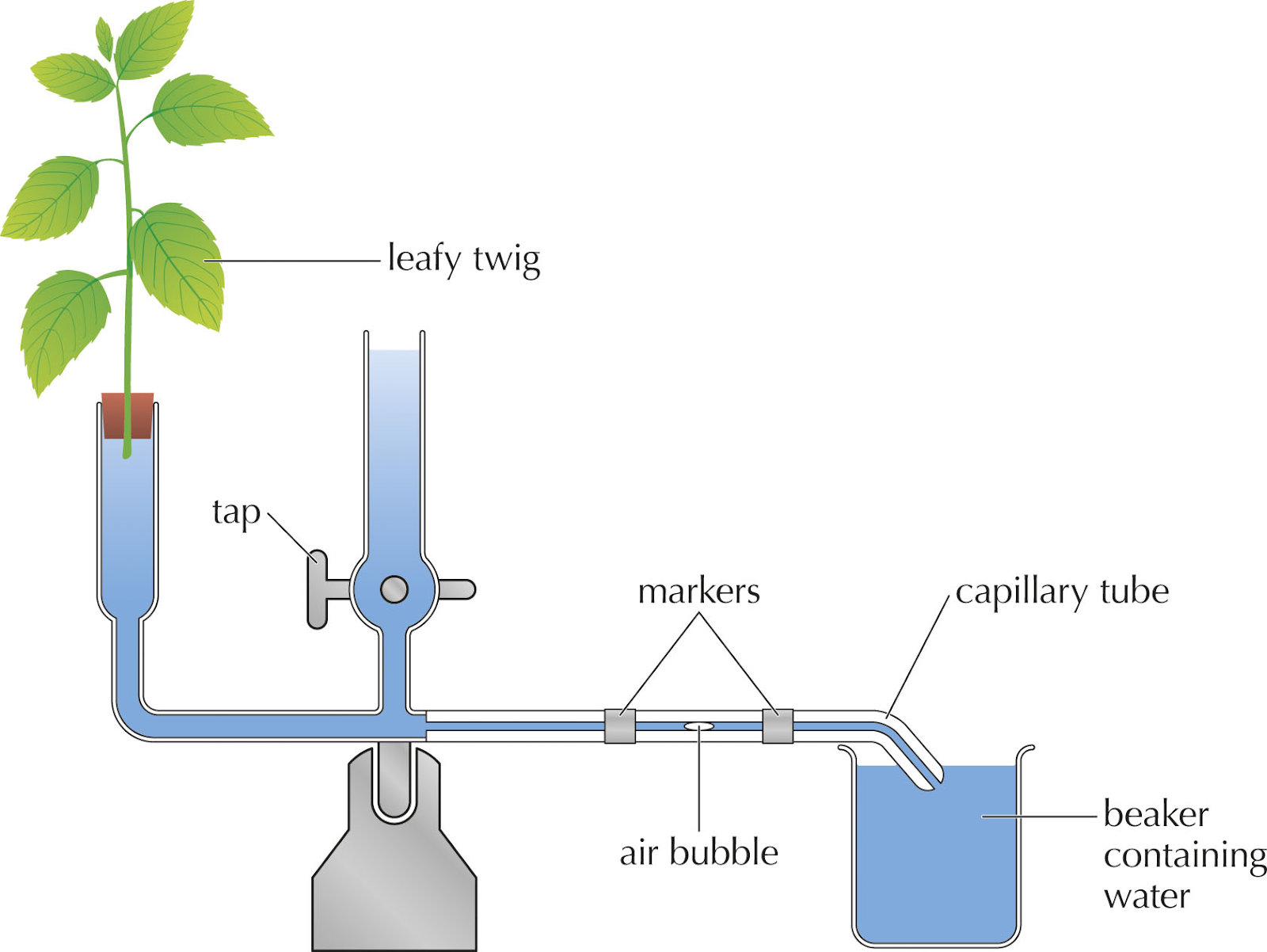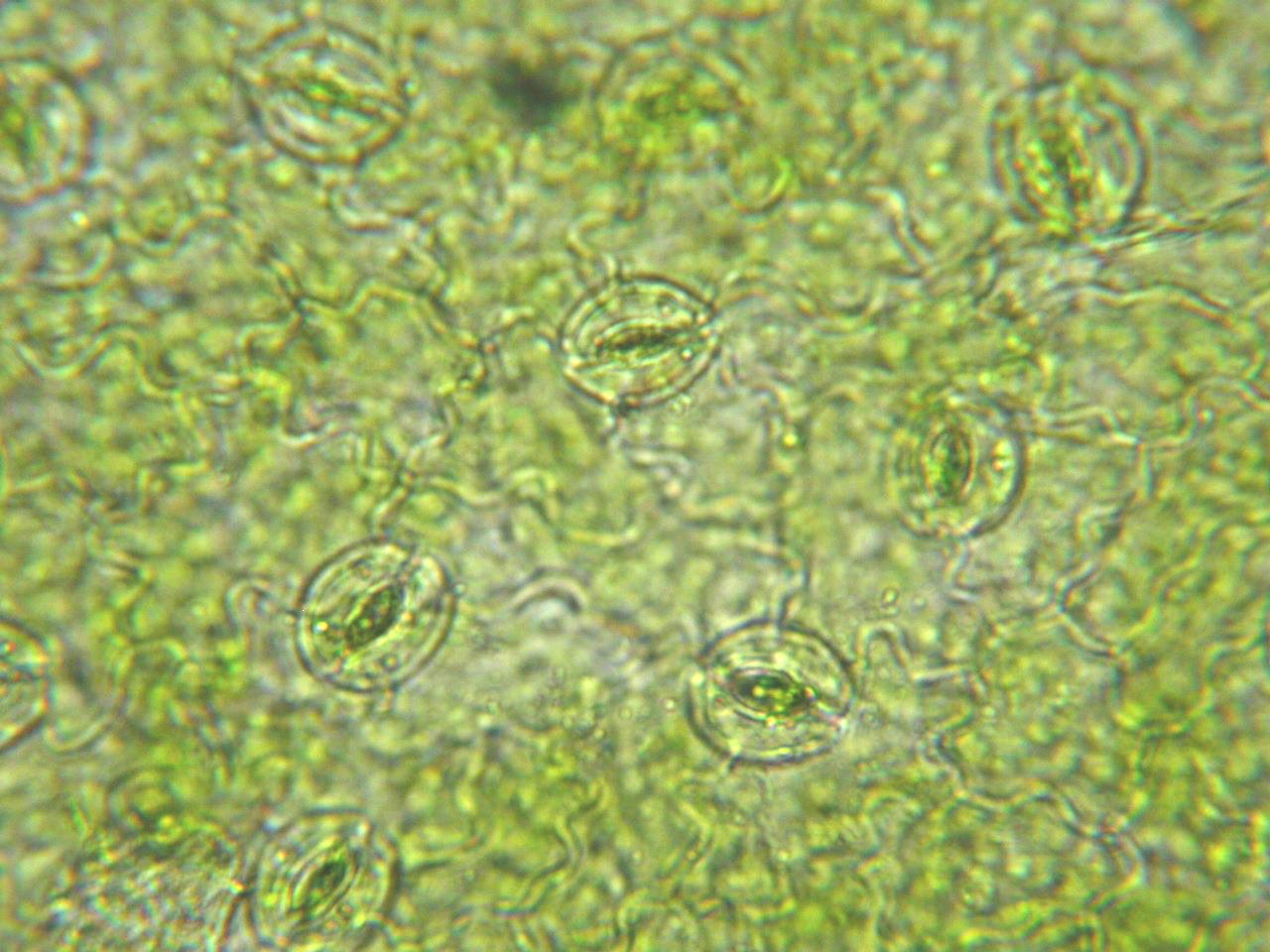Transport in Plants
Plant Cell Organisation
Plants are made up of specialised cells, which make up tissues, which make up organs (like stems, roots and leaves) which makes up organ systems, which makes up the plant!
The leaves of plants are used for:
Leaf structure
The leaf is an organ that is made up of a few different types of tissue. You need to know what these tissues are and what function they have!
Transpiration and Translocation
Plants have two main tubes running throughout their structure. The Xylem and the Phloem.
Xylem
Function: to carry water and minerals from the roots of the plant to the stem and leaves.
- Made out of a series of connecting dead cells. The cells are hollow so that water and minerals can pass through easily.
- Strengthened by a material called lignin.
- Water is evaporated from the leaves and water retention pulls water up from the roots, this is called transpiration.
Phloem
Function: to carry food substances in the form of cell sap from the leaves to the rest of the plant.
- Made of of columns of living cells with pores between cells (to allow cell sap to flow).
- The cell sap travels both up and down the plant.
- This movement of food is called translocation.
Transpiration and the Stomata
Transpiration stream
The transpiration stream is the movement of water up the plant/
- Water is evaporated from the stomata of the leaves
- Water moves up the xylem to the leaves, since there is now a shortage of water in the leaves
- Water moves up through the roots to the xylem since now there is a shortage of water in the xylem.
Factors affecting transpiration rate
There are a few environmental factors that affect the rate of transpiration (how fast the water moves up the plant).
These are:
- Light intensity - increase in increases the transpiration rate. This is because evaporation from leaves increases.
- __Temperature __- increase in temperature increases the transpiration rate. This is because evaporation from leaves increases.
- Air flow - increase in air flow increases the transpiration rate. If there is a poor air flow, the water in the air surround the leaf and water won’t diffuse out of the leaf. However, if there is a good air flow, the water outside of the leaf is constantly being taken away, so water keep moving out of the leaf to replace it. A good air flow maintains a high concentration gradient for the water.
- Humidity - increase in humidity decreases the transpiration rate. If the air around the leaves is really dry, then the concentration of water is highest in the leaves. The water will move out of the leaves, down the concentration gradient. If the air is very humid, then there is not much difference in the concentration gradient and water will not leave the plant (or will move out at a very slow rate).
Transpiration rate experiment
You can investigate the rate of transpiration using the equipment above. This is done by measuring the amount of water uptake per second. This equipment is called a potometer.
All you need to do is:
- set up the equipment as above
- Record the place of the air bubble at the start of the experiment
- Start a timer (for however long you want, the longer the better)
- Record the position of the air bubble after the time is up
- Divide the distance moved by the time taken, this is your rate of transpiration!
- Keep the environmental conditions the same (unless you are investigating the effect of one of them).
Guard cells
As you may know from previous sections, the bottom of a generic leaf is covered in little holes called stomata. Each stomata has two kidney shaped cells surrounding it, these cells are called guard cells.
Guard cells act as guards! They shrivel down to close off the stomata or they can swell up with water to open the stomata. This makes sense since if the plant didn’t have enough water, the guard cells would shrivel up and close the stomata. When the stomata is closed, no water can get out of the leaf through the stomata! Remember that there are hundreds of these though, so not all of them will be closed or open at once.
Investigating guard cells
You can look at the stomata and guard cells of a leaf through a microscope. But first, you’ll need to prepare the slide with your sample.
Some leaves can have their epidermal tissue peeled straight off with tweezers, if this is the case, you can just peel off the first layer of the underside of the leaf and prepare you slide as usual (See Microscopy section if you need reminding of how to do this).
Some leaves don’t have their epidermis that can be taken off very easily. For these plants you’ll need to make an imprint! First you put a thin layer of clear nail varnish over the section you’d like to take. Let it dry and put a piece of sellotape over the dried nail varnish. Carefully peel off the sellotape and you have your sample!
Here is how to investigate the stomata and guard cells of plants:
- Prepare your slide.
- Place your slide on the stage of the microscope and focus. Start with the weakest magnification and move your way up until you have the clearest image.
- Count the stomata in your field of vision. If you are on a weak magnification, then just count the stomata in a section of the sample (since there could be hundreds in your field of vision on a weak magnification).
- Now move the sample so that you’re looking at a different section of the sample. Count the number of stomata in this field of vision.
- Repeat step 4 at least once more and calculate a mean to determine the average number of stomata per field of vision.
- Find out the area of each field of vision and the area of the whole sample (in exams, these will be given to you). Divide the total sample area by the field of vision area and multiply by the average number of stomata in each field of vision.
This gives you a pretty good estimate of how many stomata are in a sample of leaf epidermis!
Example of what you may see:
There are 8 stomata in this field of vision.
